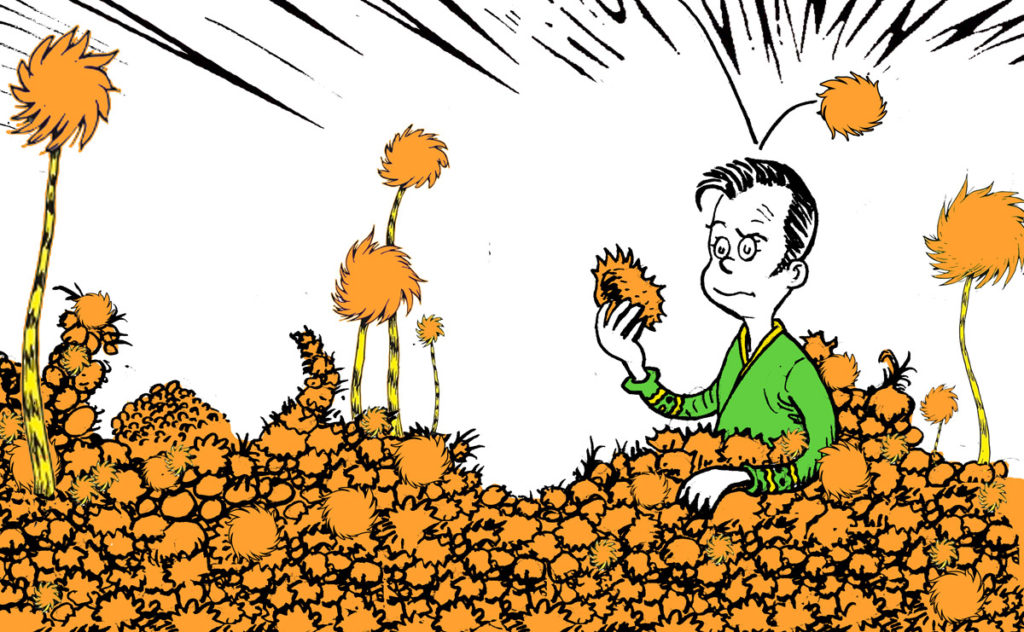
For tribbles-creator DAVID GERROLD, award-winning comic artist TY TEMPLETON, and ComicMix publisher GLENN HAUMAN, last Friday was not a fun day. While there was one tiny piece of good news in their ongoing legal struggle with DR. SEUSS ENTERPRISES (DSE) regarding the Star Trek/Seuss mash-up Oh, The Places You’ll Boldly Go! (“Boldly” for short), the main part of the news was rather unfortunate.
Things looked rosy for ComicMix back in March of 2019. After nearly two years in litigation, Ninth Circuit Federal Judge Hon. JANIS SAMMARTINO ruled before the trial could even begin that Boldly was protected from DSE’s infringement lawsuit because she considered it to be Fair Use. (You can read an in-depth analysis of that ruling here.) She threw out DSE’s complaints for both copyright infringement as well as for trademark infringement (two different things), effectively ending the lawsuit before a jury could even be seated.
Five months later, DSE filed an appeal to the Ninth Circuit, trying to reverse the summary ruling from Judge Sammantino. Last Friday, a three-judge appellate panel came back with a unanimous decision that Boldly did NOT qualify as Fair Use, and so the copyright infringement lawsuit could proceed. The panel also ruled that the summary dismissal of the trademark infringement decision was indeed correct, and so that aspect of the lawsuit is over. (You can read the full appellate opinion here.)
So…good news/bad news, right?
Well, it’s much more bad news than good, I’m afraid. The trademark claim was always the thinnest of arguments, and even DSE didn’t push hard on that point during their appeal (four amicus briefs were filed, and none of them touched at all on the trademark question). What DSE really wanted was the copyright infringement complaint reinstated, and they got it.
SO WHAT DOES THIS MEAN?
DSE hasn’t won yet. But now they haven’t lost either. We are simply back to where we were at the beginning of 2019 before the judge made her summary ruling. The lawsuit is on again, heading back to Judge Sammartino’s courtroom.
If you’re DSE, you’re ecstatic and holding all the cards right now. There will (most likely) still be a trial, but if you can convince three out of four learned judges that Boldly isn’t Fair Use, you should certainly be able to convince twelve ordinary folks of the same thing. And indeed, you might not even need to, since the appellate judges’ ruling might preclude using a Fair Use defense entirely (more on that in a moment).
Now, if you’re ComicMix, you have a decision to make, and you really have only three choices on the menu…
APPEAL THE APPEAL
Federal law allows ComicMix to appeal this three-judge ruling to a larger panel of Ninth Circuit judges. That’s known as a petition for en banc review. This time, eleven randomly-picked judges get to chime in and either uphold the original appellate decision or else overturn it. After all, maybe ComicMix just drew a bad hand and other judges might be more open to agreeing with Judge Sammartino. Fair Use tends to be VERY subjective.
Is it worth a shot? After all, other than more legal fees to petition for the en banc review, what’s the downside? If ComicMix reverses the panel opinion, it’s just about game over (unless DSE appeals to the Supreme Court, and they refuse to take roughly 98% of cases that come their way). And of course, if the en banc review doesn’t reverse the appellate ruling, then ComicMix could try to take it to the Supreme Court. But again…long shot.
And if ComicMix loses trying to go up the ladder, they’re still only back to where they are right now, having to go to court. So nothing to lose, right? Well, there is a chance, if DSE wins at trial, that they could argue that ComicMix “stretched out the case” by requesting the en banc review, thereby costing DSE extra money in legal fees. If Judge Sammartino agrees, then in addition to awarding DSE statutory damages (more on that below), she could tack on attorney fees…and ComicMix isn’t exactly a Fortune 500 company!
So the decision about whether to “appeal the appeal” does require weighing some risk/reward factors.
GO TO TRIAL AND TAKE THEIR CHANCES
At this point, unless ComicMix wins an appeal or somehow convinces DSE to settle and drop the lawsuit, they MUST go back to court and play this out. And once it’s back in Judge Sammartino’s courtroom, a LOT can happen…
The judge is still allowed to make another summary judgment. That’s a ruling before the actual trial that can, potentially, affect or even end the case. In fact, it was the judge’s previous summary ruling that “ended” the lawsuit when she dismissed DSE’s complaint based on her determination the Boldly was Fair Use.
Conceivably, the judge could now rule the opposite, now that the appellate judges determined that Boldly is NOT Fair Use. She could say, “Game over” to ComicMix and rule in favor of the plaintiff, possibly awarding damages, possibly not.
Also a possibility is that Judge Sammartino rules in favor of the defendant based on some other aspect of their defense (they didn’t argue only Fair Use; they threw everything but the kitchen sink into their defense). If the judge makes a summary ruling on one of those other arguments and dismisses the lawsuit once again, expect yet another appeal by DSE and lots more blogs from yours truly!)
And finally, the judge could just say, “Okay, we’re doing this thing…” and move forward to seating a jury. And then the jury gets to decide. The question is: can DSE try to ask the jury to decide Fair Use now that the appeals panel said that Boldly was not Fair Use? Opinion here is mixed. Two lawyers I spoke with both said that Fair Use is off the table in the same way that a defense lawyer can’t plead insanity once a court rules the defendant is mentally competent to stand trial. But then, New York Times reporter DANIEL VICTOR said the following in an article on the appellate ruling: “The judges’ ruling allows the lawsuit to proceed on the fair use claim.” Maybe that’s a typo, maybe he’s wrong. Or maybe he’s right.
There’s also some debate whether removing a Fair Use defense in a civil case violates the defendant’s seventh amendment rights under the U.S. Constitution. But the question of whether or not ComicMix can re-argue Fair Use in front of a jury is very significant. If they can’t argue Fair Use, then they’d better have some other very impressive arrows in their legal quiver.
Now, if ComicMix loses, it could be a little bad or a LOT bad. If the jury finds that there was infringement, then the questions become: 1) how many counts of infringement, and what kind of infringement? Why is this important? Because statutory damages are awarded based on each “work” that is infringed. In this case, it would be per Seuss book. Obviously, ComicMix used Oh, The Places You’ll Go! as a source. But they also used the star machine from Sneeches, as well as the north-going and south-going Zax from The Zax…
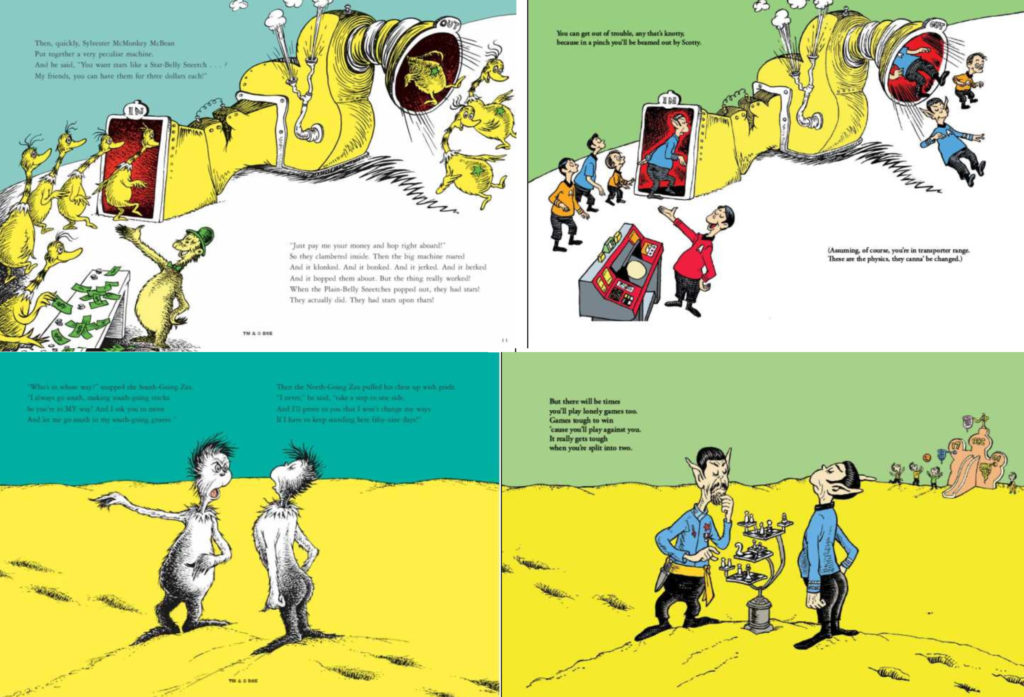
However, The Sneeches and The Zax are both from the same book. So potentially, there might be only two instances of infringement from which damages can be awarded—although I haven’t seen the entire Boldly book (only what’s been included in the court filings). But let’s assume for the moment that there’s only two counts of infringement. What could the damages be?
Legal statue from the 1976 Copyright Act sets the award at somewhere between $750 and $30,000 per work, as determined by the court. This means that ComicMix might end up having to pay only $1,500 or as much as $60,000 to DSE (yikes!). And an even BIGGER yikes is that the judge has the discretion to increase that award up to $150,000 per work if the infringement is found to be willful (intentional). If the infringement is non-willful, meaning the infringer did not know they were violating copyright law, the damages can be reduced to a minimum of $200 per work. That means the penalty for ComicMix could range from $400 (the price of a speeding ticket) to $300,000 (the price of a house!). And if more than two Seuss books were sourced, those numbers could obviously increase.
Although I’m not a lawyer, I doubt either extreme ($400 or $300K) will happen. ComicMix knew what they were getting into and even said so in their Kickstarter. They knew they might have to go to court to prove that Boldly was a mash-up parody and qualified as Fair Use. They rolled the dice on that one. So this wasn’t entirely accidental and non-willful. However, since ComicMix did believe that what they were doing was Fair Use (and still do), it’s hard to throw the $150K/violation book at them for willful infringement. Also, considering that the book was never published and no crowd-funding money was ever taken in by ComicMix, the maximum penalty would seem to be excessively punitive and not warranted in this particular case.
Now, of course, ComicMix could also win the case in front of a jury. If so, there might be another appeal by DSE, but that depends on how the case unfolds and whether there’s anything to appeal. You can’t simply appeal because you don’t like the verdict. A procedural mistake needs to have been made.
TRY TO SETTLE
The last option open to ComicMix, if they’re really concerned that they’ll lose, is trying to settle with DSE. Maybe ComicMix offers to pay some of DSE’s legal fees and promises never to try to publish Boldly again—or maybe publish with a completely different art style. Or maybe they offer to buy a license for it…although it’s doubtful DSE would want to deal with them as a licensee at this point. Also, it’s not entirely clear what DSE would license, as the characters are all from Star Trek. If anything, ComicMix might also need to get a license from ViacomCBS in addition to DSE—and the two licenses together could wind up costing more than a judgement of infringement.
Of course, DSE might not want to settle. Perhaps they want to make an example of ComicMix (as they’re tried and often succeeded in doing with other unlicensed Seussian works in the past) to discourage future attempts by others to mash-up Dr. Seuss with other properties and hope they get away with it. On the other hand, remember those numbers I just listed? What if DSE’s award is $1,500 with no attorney fees? Then they’ve just spent four years and Grinch-knows-how-many-hundreds-of-thousands of dollars for a mere pittance. Settling now could lock in a “fair” amount for both parties and save each the cost of a trial and possibly more appeals. Also, while I don’t know how well-funded ComicMix is, they ain’t swimming in a pool full of gold coins. DSE could fight till the bitter end, win, and end up trying to wring blood from a stone.
WHAT’S NEXT?
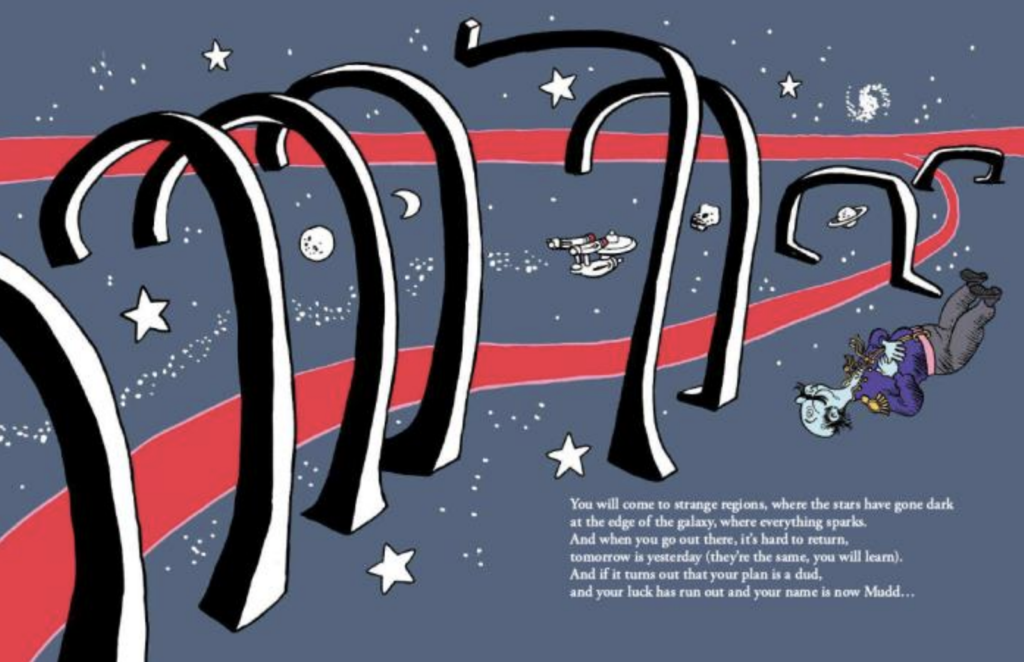
I’ve reached out to GLENN HAUMAN at ComicMix asking what they plan to do now that the appeal has come back, but his reply was only…
We’re planning to comment,
but it’s taking some time
to express our response
in our usual rhyme.
Glenn did, however, tell the New York Times that his lawyer had yet not decided how to proceed. But Glenn was still feeling “pretty optimistic.” He also told the Times, “I’m just going to quote Captain Kirk and say there are always possibilities.”
Whatever happens, we’ll know by January 4 whether ComicMix decides to try for an en banc review, as the deadline for filing that is 14 days from the date of the filing of the first appeal ruling.
So stay tuned!

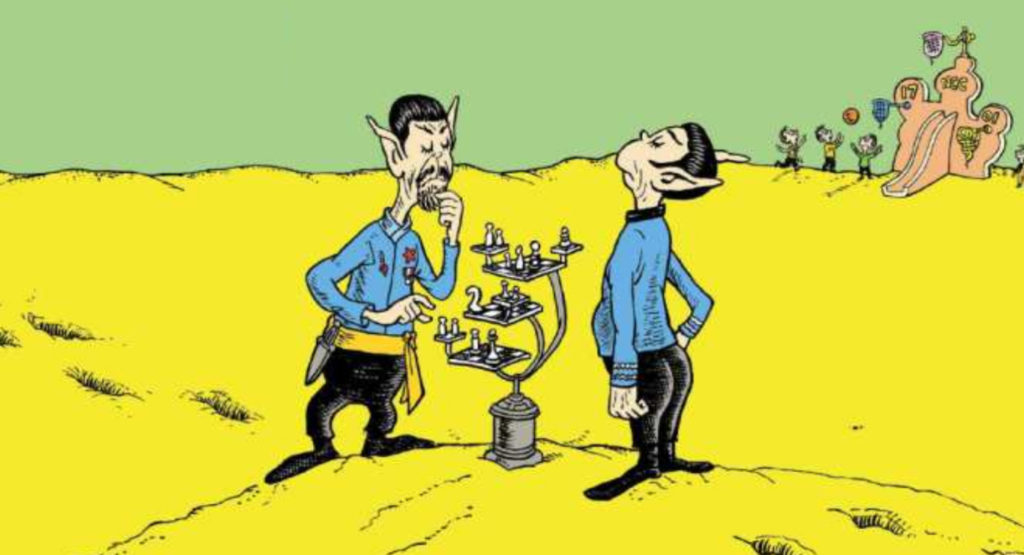

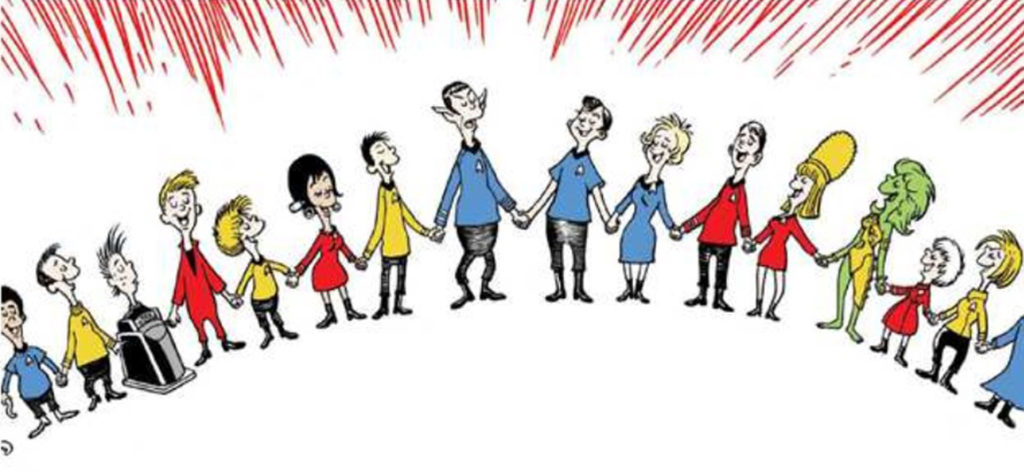
How would DSE respond if fair use is disallowed as a defense and they suspect that a jury ruling in favor of ComicMix was due to pity? Would the DSE be able to appeal to a higher court due to the jury being prevented from ruling on fair use? It may be possible that DSE’s legal team may prefer a fair use ruling that implies that a portion of the property is theirs rather than risking a series of rulings over the next few decades that erode their intellectual property.
A fair use ruling is always case-by-case. No one fair use ruling should affect any other ruling based on the same source content. It’s the alleged infringing work that determines wether or not it’s fair use, not the original.
A party can always ask a judge to set aside a ruling made by a jury that has no basis in the evidence. VERY rarely allowed.
VERY rarely allowed…and highly unlikely with this judge who seems to want to give ComicMix every benefit of the doubt.